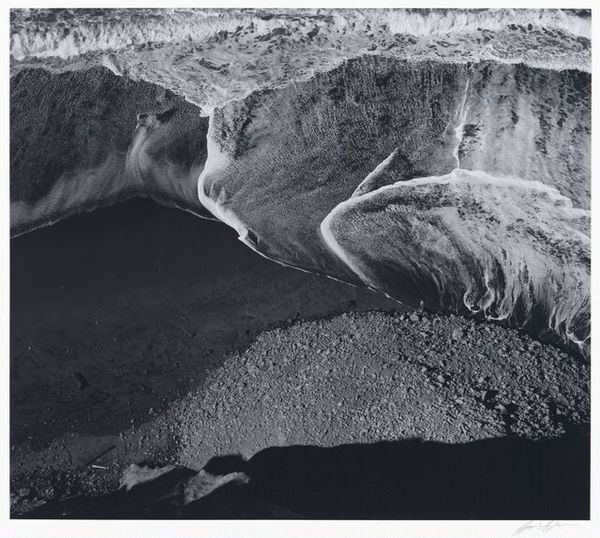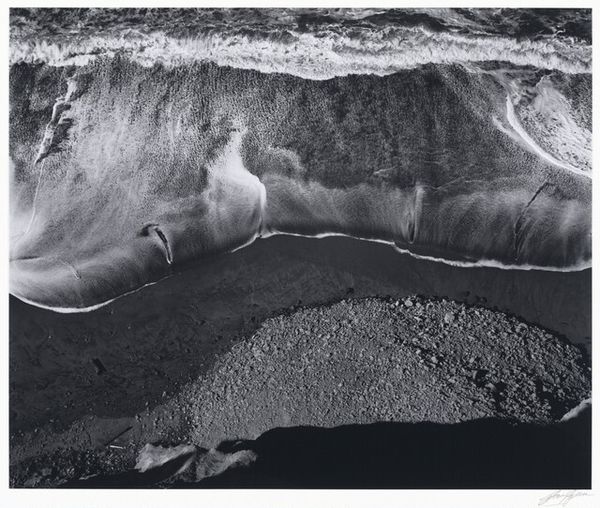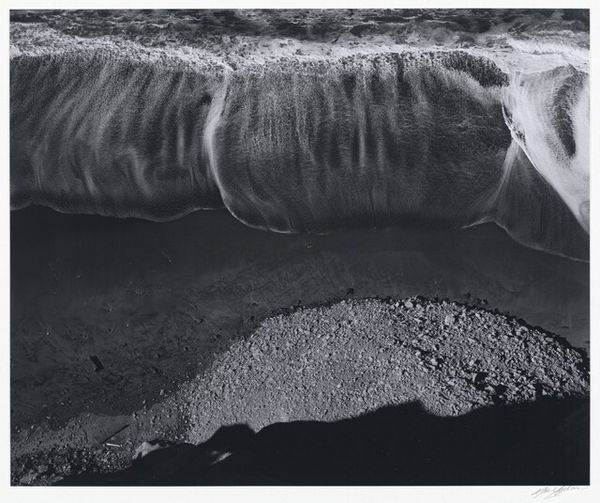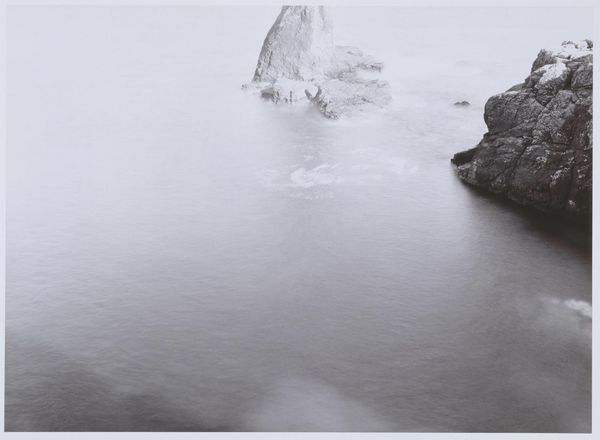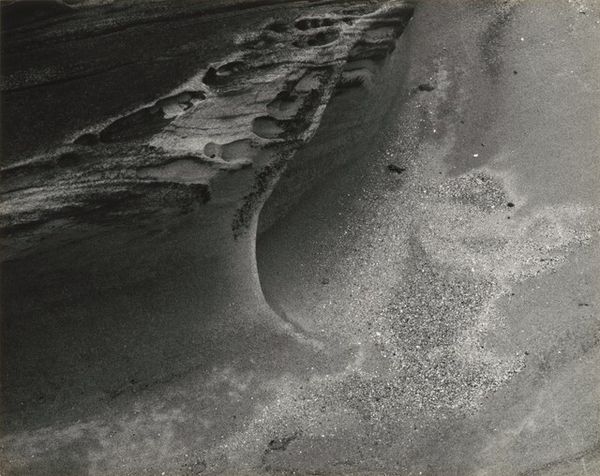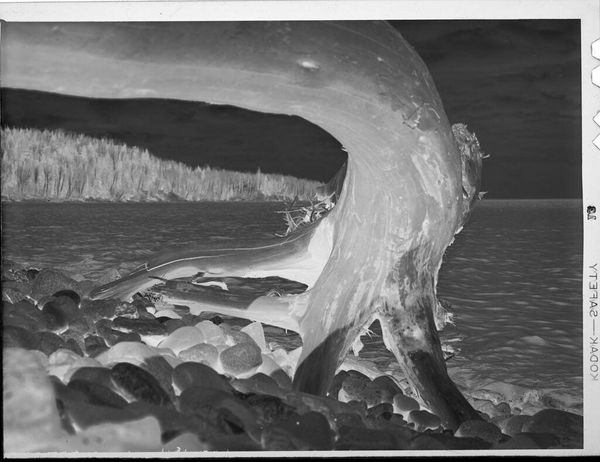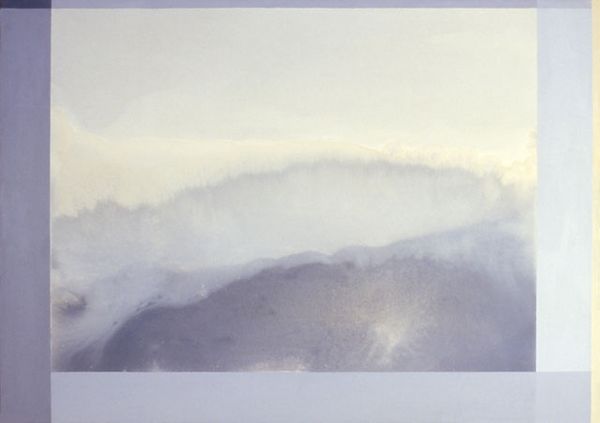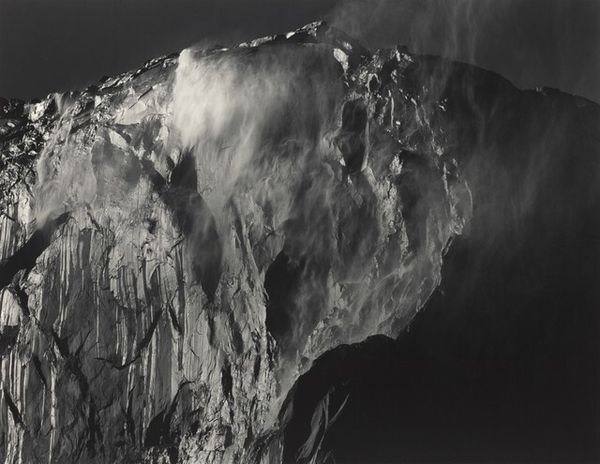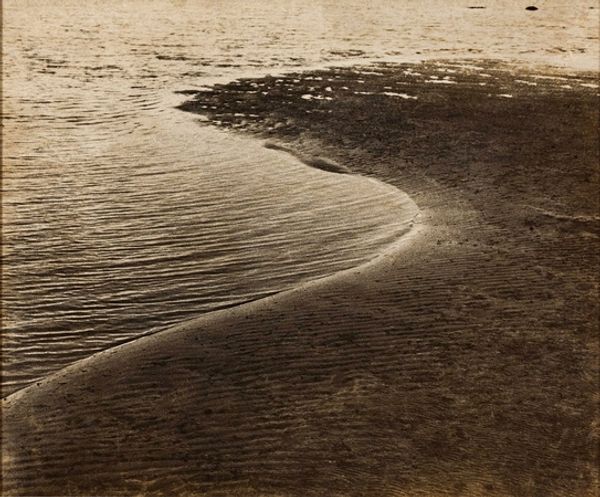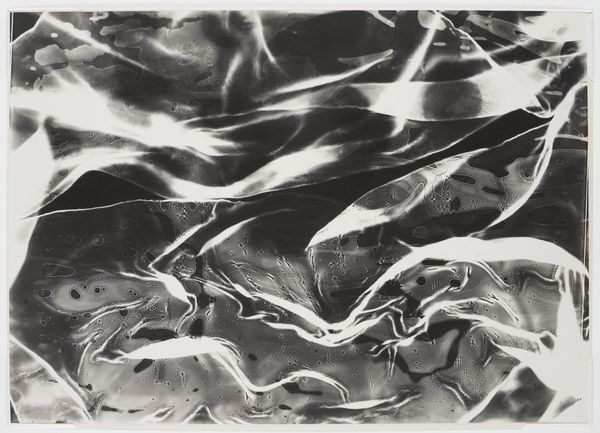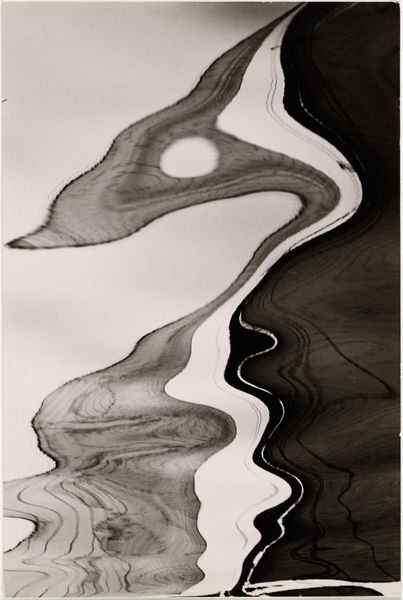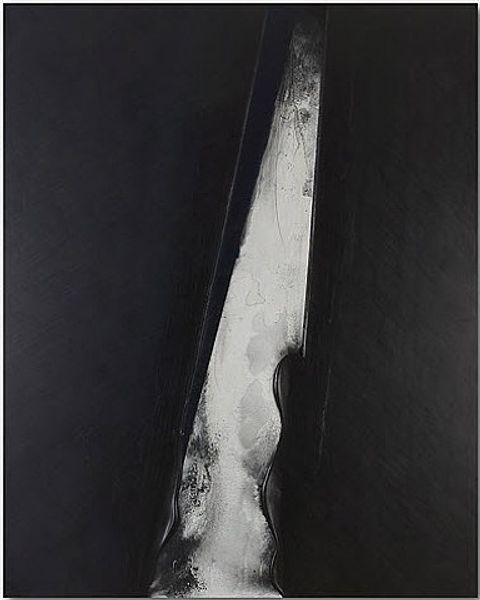
Surf Sequence 3, San Mateo County Coast, California Possibly 1940 - 1982
0:00
0:00
Dimensions: overall: 33.4 x 28.3 cm (13 1/8 x 11 1/8 in.)
Copyright: National Gallery of Art: CC0 1.0
Curator: Welcome. We're looking at Ansel Adams’ "Surf Sequence 3, San Mateo County Coast, California." The date is a bit vague, listed as somewhere between 1940 and 1982. It's a gelatin silver print, part of his exploration of the California landscape. What strikes you initially about this particular photograph? Editor: My breath hitched, actually. From above, the restless sea looks almost...gentle, in a way, flowing sand that both collides with something rocky on the beach as much as embracing it in frothy blankets. It makes me think about stillness found even in constant motion. Curator: Adams often sought out these moments of dramatic beauty in nature. He saw photography as a way to reveal the underlying structures and patterns of the natural world. His focus wasn't just on documentation; he also cared about activism and advocating nature conservancy Editor: I see a constant tension here—smoothness and texture, light versus encroaching darkness, the ephemeral, restless waters against a solid mass. He frames an interesting debate about opposing things that co-exist simultaneously Curator: Exactly! The high contrast that he achieves emphasizes that tension you mentioned, but also echoes a tradition in photography known as pictorialism where a photographer employs strategies associated with painting and printmaking. This approach enabled him to craft rather than simply capture images. Editor: Hmm, this composition from a bird's-eye view gives the impression of some abstract topography in the photo's center. I wouldn't be able to grasp where I am in reality unless there were references. In any case, there aren't any visible subjects of interest that are obviously present. Do you think this was intentional or an unplanned composition? Curator: That sense of being suspended, outside the frame is part of it, I think. And yet, that horizon makes an appearance on its own as the place of some action in this landscape. Adams was incredibly deliberate, using meticulous darkroom techniques to achieve the tonal range and clarity he sought. Editor: It is very thought provoking how his lens found a pattern with light and shadow play, making every viewer wonder about what to expect within such complex scenery! And, despite not having color to define specific natural traits of objects, the image brings to the surface a hidden intensity only his talent could have ever conveyed! Curator: Absolutely. Looking at this photograph reminds me that we can see both grandeur and fragility in the coastal landscapes that we inhabit, and it reveals some hidden features too! Editor: Agreed! In essence, such image is like taking something ordinary and making people contemplate it so intensely that no one will ever perceive coastlines so passively. It's as simple as this—beauty isn't just an artistic process, it involves observation, sensitivity, talent... the Ansel Adams signature recipe.
Comments
No comments
Be the first to comment and join the conversation on the ultimate creative platform.

